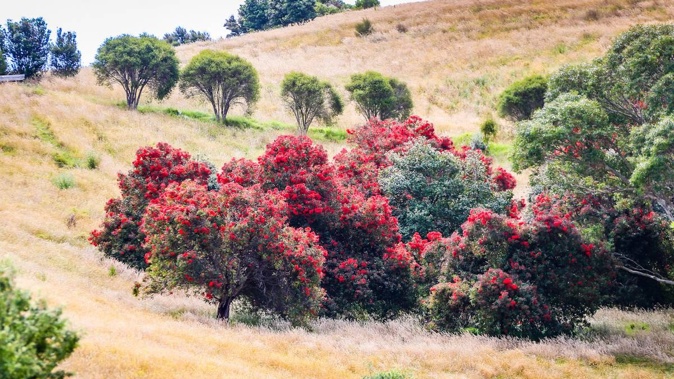
Last summer’s rain, a cyclone and the ability to “communicate between themselves” has meant Hawke’s Bay pōhutukawa are part of a crimson-tide turning heads across the country.
Throughout the motu the native trees, known colloquially as New Zealand’s Christmas tree or Northland roses, are in the midst of an extra-stunning bloom, and ecologist and director of biodiversity for Ahika Consulting, Mike Thorsen, said it wasn’t unusual that residents were noticing a extra-spectacular red wave this season.
“There’s a lot of things that go into their flowering. It can only do it when it’s in good shape, and they tend to flower heavier when it was a good previous summer,” he said.
“Last summer, people would remember it was quite wet, and if you were planting trees, you didn’t have to look after them quite so much.”
He said that this essentially “set the trees up” and gave them the reserve to think about the effort of producing flower buds.
“They then try to do as much flowering as possible while the weather conditions are good.
“If we have a sudden drought come in, and the soil moisture drops pretty quickly, then they’ll actually drop their flowers, but while the conditions are good, they’ll make flowers while the sun shines.”
/cloudfront-ap-southeast-2.images.arcpublishing.com/nzme/KDBQF4MBQ5F7FFSUQ4P6KBD45U.jpg) A bright shade or red swept across Hawke's Bay's Cape Coast this summer where many Pōhutukawa trees sit. Photo / Paul Taylor
A bright shade or red swept across Hawke's Bay's Cape Coast this summer where many Pōhutukawa trees sit. Photo / Paul Taylor
Hawke’s Bay’s wildlife will also be benefitting from the flowers as well.
“Scientists are thinking the flowering is a response to environmental variables, but it also creates a big resource for pollinators.”
This also means that more seeds have the potential to find a place to thrive and grow as we move into future summers.
“Out of the millions of seeds, it’s about two that will grow.”
Thorsen said while he wasn’t aware of any studies to do with pōhutukawa’s growth after Cyclone Gabrielle, his guess was it definitely could’ve had an impact on the future of the trees in Hawke’s Bay.
“I’ve worked overseas and in the tropics, and when cyclones come through, it really hammers the plants and the trees. They tend to go into a shock and then have a flush of growth.”
He said pōhutukawa also really thrive in bare open sites, and this may have created good chances for more trees to grow in places like slips and falls.
The ecologist said the bulk of trees in Hawke’s Bay were planted, with naturally-seeded pōhutukawa occurring growing in Mahia and northwards.
“Pōhutukawa is mostly planted in Hawke’s Bay. It’s taking its cue the same as the other wild plant that would be around,” he said.
“There’s also likely we’ll see rare plants like the kākābeak turn up in places that we didn’t even know were there.”
There is also a theory that the pōhutukawa are also experiencing a “mast seeding” event, which begins with prolific flowering followed by the production of huge amounts of seeds.
“The theory is that the predators that usually eat the seed just can’t eat it all,” Thorsen said.
“[The pōhutukawa] are likely trying to stay one step ahead of things that are going to be bad for them.”
Pack mentality may also be a thing.
“There’s increasing evidence that trees can communicate between themselves through chemical signals. It’s possible that as flowering goes on, trees will let other trees know that they are flowering.
“For a simple organism, they are incredibly complex.”
But for now, these simple organisms are making the most of Hawke’s Bay’s relatively stunning summer.
“It’s almost like the plant equivalent of ‘life’s good, and I’m enjoying it.’”
Mitchell Hageman joined Hawke’s Bay Today in late January. From his Napier base, he writes regularly on social issues, arts and culture, and the community.
Take your Radio, Podcasts and Music with you









